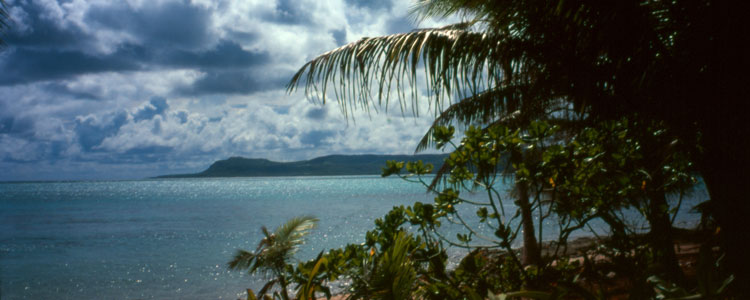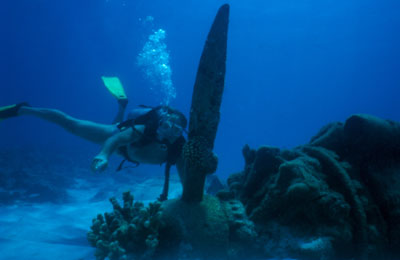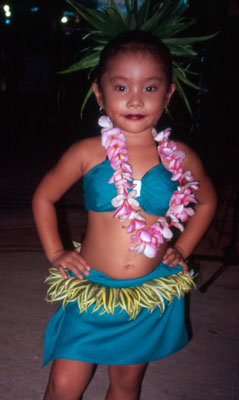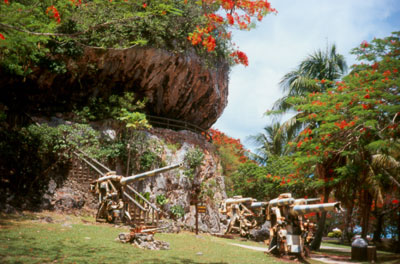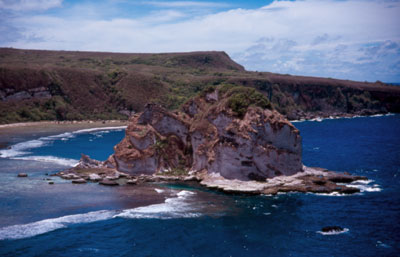Finding reminders of war on the warm and welcoming island of Saipan
by James Hansen, Weeki Wachee, FL
Once in a while we need to rediscover a place that has been out of our sights for a long while, and Saipan is just such a place. Part of the United States Commonwealth of the Northern Mariana Islands (CNMI), Saipan is located in the West Pacific, north of Guam, Palau and the Micronesian destinations of Yap and Chuuk (Truk) Lagoon. Hardly anything has been written about it, and it has been off the radar for US travelers for some time. Curiosity and the urge to explore led my wife and me to visit in June ’09.
The island
As a US commonwealth (and one liberated by US troops), Saipan is a friendly destination for American visitors. We found the people to be warm and welcoming. The US dollar is the local currency.
The island, only about 13 by seven miles in size, is located at 15 degrees north latitude, so the temperature remains constant all year ’round, though it is wetter in the summer and fall. The island is volcanic in origin and quite lush, with isolated beaches in the more remote areas.
While English is the official languange, many locals also speak Japanese, as, traditionally, Japanese tourists have far outnumbered US visitors. Saipan has always drawn travelers from Asia, but we noticed that during our visit tourism was way down. This was due to several factors: the recessions in both the US and Japan, economic woes elsewhere and the specter of the H1N1 virus, which crippled tourism from major Asian countries. This meant that local tour and dive operators were eager for business and glad to assist visitors.
A long plane ride is required to get to the island, located almost 6,000 miles west of San Francisco and 3,200 miles beyond Honolulu. Continental Airlines made it bearable for us, with smooth flights from Tampa via Houston and Honolulu to Guam. We went the last 120 miles to Saipan on a local commuter airline.
Touring
Land tours of Saipan are worthwhile, especially for those with an interest in history. A taxi, rental car or guided tour is necessary to visit the various beaches and towns scattered around the island.
A lady named Ki Concepcion drove us around the island. We got her name from a local at our hotel; she is well known in the area. We visited the old Japanese lighthouse on Navy Hill; the government buildings on Capitol Hill; Banzai Cliff and Suicide Cliff; the last WWII command post, where General Saito ordered his men to each take “seven lives to repay our country”; the highly picturesque Bird Island wildlife refuge; Kalabera Cave, an old Spanish prison for islanders; the Grotto, a cavern with three exits leading to the sea; two Japanese military bunkers, and the Korean memorial to war victims. We also saw former garment plants, now closed, as well as the commercial port and some great panoramas.
Ki charged us only $80 for two people for our four-hour tour.
From the town of Garapan, we hiked about a mile south to visit Sugar King Park, the old Japanese jail and the old Japanese hospital that now houses the CNMI Museum. On the way, we stopped by the DFS Galleria shopping center, where we found Bulgari, Cartier, Chanel, Dior, Gucci, Hermès, Louis Vuitton, Montblanc, Omega, Prada and Tiffany — pretty incongruous on this modest island!
We also visited the nearby American Memorial Park, which has a military/historical museum in its visitor center and a splendid monument to the 2nd and 4th Marine Divisions and the Army’s 27th Infantry Division that liberated Saipan.
We took a water taxi over to Mañagaha, a small island just two miles west of Garapan. There we found some of the best beaches around, complete with a restaurant, convenience shop, bathrooms and changing areas as well as recliners and snorkel gear to rent. The shallow water around the island contains a few coral ledges and small tropical fish. We paid $15 apiece for the round trip on the water taxi plus an “island tax” of $5 each.
Decisive battle
During WWII, Saipan witnessed a highly significant battle. To the Japanese, Saipan was a key component of their defensive ring and a vital military center.
Starting on June 15, 1944, US Marine Corps and Army troops stormed ashore and began attacking Japanese defenders. US commanders thought that it would take three days, but the campaign took three weeks. The fall of Saipan signaled to Tokyo that the war was indeed lost, and Prime Minister Tojo resigned just afterward.
The most haunting reminders of this battle are the two cliffs at the north end of the island. On Suicide Cliff, hundreds of Japanese soldiers jumped over 750 feet to their deaths, and, on nearby Banzai Cliff, Japanese civilians did the same, having believed the twisted Japanese propaganda that US troops would torture and kill them.
Underwater exploration
Wreckage from the battles waged there is scattered around the waters surrounding Saipan. The shipwrecks include a freighter and a smaller subchaser, the latter a terrific site. Typical aircraft sites include the so-called “B-29,” though what’s there is actually a large Japanese flying boat, and the “Zero” wreck, which is more likely a small seaplane. All of these sites sit in water 35 feet or less in depth — fine for snorkelers and divers!
If you take the five-mile journey to Tinian (remember the “Enola Gay”?), you’ll see the remains of land vehicles resting at Dump Cove, some 60 feet deep, at most.
I joined up with Global Ocean Divers, Inc. (phone 630 233 8157), located at the Fiesta Resort & Spa in Garapan. General manager Kazuhiro Nakamura and marketing manager Eva McKinney were both highly professional and helpful dive guides. They operate two small boats that cover all the dive sites in Saipan and Tinian.
Saipan also hosts dazzling marine life, and I saw an extraordinary array: bannerfish, anemonefish, blue-streak gobies, lionfish, scorpionfish, Picassofish, Moorish idols, parrotfish, wrasses, sergeant majors, various kinds of butterflyfish, a six-foot moray eel, a snowflake moray, whitetip reef sharks, lots of arceye hawkfishes, angelfish, surgeonfish, yellow tangs, sea turtles, octopi with spans of two and three feet, Achilles tangs, garden eels, tiny crabs about half the size of a little fingernail, pufferfish, hagfish and stingrays.
The wrecks are less intact and less spectacular than those in Chuuk (Truk) Lagoon, and the marine life in Palau is more stunning and varied, but the water temperature was a comfortable 84 degrees, with visibility of 80 to 120 feet on most dives. As such, Saipan compares favorably with Hawaii on those two counts. Most American divers just don’t know about it!
Practicalities
A word about expectations is needed. For most people, a week to 10 days in Saipan would be plenty.
Restaurants feature Asian cuisine, although American food can be found. Our favorite places for breakfast were the Coconut-Tei (Japanese) and Wild Bill’s (American and Thai dishes). Our preferences for dinner were the Thai House and the Country House (American). Most dinners cost us between $40 and $70 for two, wine and tip included.
There are very few first-class restaurants in Garapan, but on Thursday nights street vendors set up booths in town to sell local food, which is cheap, good and plentiful.
What did all this cost? Our complete package booked through Trip-N-Tour (Longwood, FL; 800/348-8042) came to $7,195. This broke down to $3,990 for the six-day diver package and $3,205 for the nondiver package. We got 17 days’ hotel stay with an ocean-view room at the Fiesta Resort & Spa Saipan; airport-hotel transfers; diving for six days for myself, and round-trip flights for two people on Continental Airlines.
You may be a veteran Pacific traveler, a history buff or a water person. Whatever your passion, if you are the type who thrives on discovery — or, in this case, rediscovery — consider a visit to Saipan.

